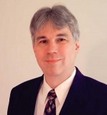Did you know that the West Coast Offense in American football began as a mistake? In his book, “The Score Takes Care of Itself,” late NFL Hall of Fame Coach Bill Walsh recalls how a botched play led to a major change in how football teams run their offense. It goes back to a time when he was an assistant coach with the Cincinnati Bengals…
“Early in the second half of our game with the Oakland Raiders, Bengals tight end Bob Trumpy came out of the huddle and lined up on the wrong end of the line of scrimmage—the left instead of the right side, as the play called for.
“Trumpy recognized his mistake almost immediately and tried to correct it by sliding over to the right side before the ball snap. The Raiders were utilizing a complex pass defense at the time, so when they saw Bob shifting from one end of the line of scrimmage to the other—legal, but not done—all hell broke loose.
“Oakland defensive backs began frantically flapping their arms and screaming, running around and creating havoc as they tried to react to the bizarre movement of Cincinnati’s wandering tight end. Three of them actually collided in the middle of the field. The whole scene was kind of funny, although nobody was laughing on either bench. We lost yardage on the play, and when Bob trotted to the sidelines with a sheepish look on his face, he muttered to head coach Paul Brown, ‘Sorry, Coach. It won’t happen again.’”
Walsh goes on to describe how, while he and the other coaches were reviewing the play on film the following day, everybody in the room laughed. That is, everyone except Bill Johnson, the Bengals’ offensive line coordinator. Instead, he was thinking, “What would happen if we put Trumpy in motion intentionally and worked plays off of it?”
Walsh recalls staying up most of that night thinking up ways of turning what was initially an accident into a tactical advantage. Before long, every team in the league added it to their playbook. Over the years, he built upon this “mistake,” creating what has come to be known as the “West Coast Offense.”
Bill Walsh eventually he went on the become head coach of the San Francisco 49ers. One night before an away game, he was sitting in his hotel room watching sports highlights on a local television station. One of the featured teams was an itty bitty college in Itta Bena, Mississippi, where earlier that day the starting wide receiver clearly wasn’t the fastest, but he made up for it in other ways.
When it comes to drafting players, NFL coaches and scouts are obsessed with numbers. For prospects at the wide receiver position, a favorite metric is the player’s time in the 40-yard dash. It makes sense. After all, a receiver’s speed off the line of scrimmage is the key to beating the defending cornerback and getting open.
But while all the other teams were looking at raw speed, Walsh saw in this young player (whose 40-yard dash clocked in at a dismal 4.6 seconds) what he describes as “functional speed, fantastic moves, hands that were as sure as a surgeon’s, and the heart of a warrior.” (Functional speed is the speed at which a player can move once he has the ball in his hands).
That young wide receiver was none other than Jerry Rice, who long after his retirement still holds several NFL records by a wide margin, and is often referred to as the greatest receiver of all time.
Walsh recalls being strongly advised not to waste a first-round draft choice on Rice. According to conventional wisdom, he was a sixth- or seventh-round pick at best.
Walsh ignored what everyone else was telling him, and instead chose Rice in the first round, focusing not on his raw speed but on his moves from fifteen to fifty yards out. After all, when you think about it, that’s what really counts most in a game when everything’s on the line. Not a stopwatch reading based on how fast a player runs on an open track.
In Walsh’s own words: “Conventional wisdom often produces conventional results. When striving to go beyond conventional results, you must go beyond the conventional and against popular opinion. This means trusting your own judgment enough to be resourceful, innovative, and imaginative. It means resisting the herd mentality.”
Are you letting what everyone else thinks limit your ability to come up with new ideas? You might be missing out on more than you realize…
For over thirty years, Art Murray and his teams have helped organizations around the world transform into knowledge enterprises. A knowledge engineer by trade, he has the unique ability to capture and grow deeply embedded personal and institutional knowledge. His many clients include government agencies, non-profit organizations, and companies of all sizes in the Americas, Europe, Asia, and the Middle East. He has advised government leaders in ministries of defense, law enforcement, higher education, public health and whole-of-government in making the transition to a knowledge-based economy. His latest research is aimed at developing systems for higher education at a deep structure (memory engram) level.
As the first Fellow at the George Washington University Institute for Knowledge and Innovation (now the International Institute for Knowledge and Innovation), he is Director of the Enterprise of the Future program (enterpriseofthefuture.org). He has served as advisor to numerous international corporations and non-profit organizations in the fields of science, integrative medicine, smart cities, and organizational learning. He is a keynote speaker, a member of the Global Speakers Federation, an editorial board member and reviewer for scientific journals and trade publications. He writes the widely-read column “The Future of the Future” which appears in KMWorld Magazine (http://www.kmworld.com/Articles/Column/The-Future-of-the-Future/).
He holds a B.S.E.E. from Lehigh University, and the M.E.A. and D.Sc. degrees from The George Washington University.

Post new comment
Please Register or Login to post new comment.